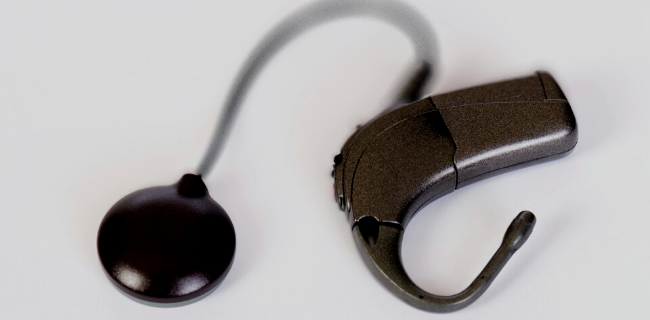If hearing aids are your lifeline to the world, you get what a pain it is when one goes down. When both go down at the same time, it’s a tragedy. If this happens to someone you care about, be prepared to step up. Frustration is the polite description of what is coming. 
Gary had complained his hearing aids didn’t seem to be working as well. We realized his hearing might have just gotten worse but thought since it had been eight months maybe they needed an adjustment. At his appointment, Gary explained some of the problems he had understanding speech, especially in crowded, noisy environments. His audiologist checked the levels and tried to fix a feedback issue one hearing aid was having but decided he should send it in for repairs.
The audiologist suggested taking impressions and switching to custom molded domes.
He finished adjusting the other aid and let us know he’d be able to have the newly molded domes ready when we came back to pick up the repaired hearing aid. He also wanted to get an updated audiology exam on Gary to see if his hearing was declining.
This visit was in early December. The holidays and New Year closings meant it would take SIX weeks before Gary was scheduled to return. Slight grumbling but we thought, ok he still has one working hearing aid.
Two days later you know what happened.
Down went the other hearing aid. It didn’t stop working entirely, but sounds were so muffled Gary just stopped wearing it. We thought maybe one of the adjustments jarred something loose. So there we were. With both hearing aids down. Six weeks.
Cone of silence
It seemed like an eternity. Friends and family practiced their baritone voice. It didn’t help. We went to his neurology appointment. The resident eventually just asked me her questions after repeated attempts by Gary to understand. Her voice tone was just too high.
By the third week in January there was a family countdown to hearing aid day. The neighbors got excited “hearing aid day tomorrow?”. I wanted to skip into the office. I know Gary was ready. You could see the frustration every day. He had retreated into slumping shoulders and sitting alone all through the holidays.
The test
The first stop during Gary’s appointment was the sound booth. He took both the pure tone hearing and speech recognition test. The results surprised the audiologist. I’m sure he thought we were exaggerating the effects of superficial siderosis on hearing.
Gary started with the chips stacked against him. He was an aviation machinist mate in the navy. Noise, jet fuel, and radiation exposure all contributed to his early hearing problems even before superficial siderosis entered the picture. Neurodegeneration has not only compounded but has accelerated the problem two-fold.
In the nine months since Gary had tested for new hearing aids his hearing has dropped an average of 20 dB in each range from 1000 Hz and down. He shows moderate hearing in the 250 and 500 Hz area, severe loss at 1000 Hz, and a profound hearing lossOverview In approximately 95% of superficial siderosis patie... More from 2000 Hz and down.
The next evolution in hearing aids
Gary returns in three weeks for a pair of ReSound LINX3D receiver in channel (RIC) hearing aids with n-case custom earmolds. Released April 2017, ReSound considers these the optimal technology for profound sensorineural hearing loss. The website promises:
• Up to 50% better at identifying speech
• Up to 80% more of the sounds around them
• Understand up to 40% more speech in noise
Before we left the audiologist replaced his original domes with a set of custom molded silicone domes that fit inside his ear canal. This change helped his hearing at once. Since this pair will only be ten months old when his new set comes in the audiologist wants him to keep them for a back-up if by chance repairs are needed again. No more repeating those six weeks of frustration.
Life has returned to our usual routine. Gary has a lighter outlook now that he can join in the conversation again. We’ll be back with a follow-up review on the new hearing aids in a few weeks.




Great to learn that the problem was eventually resolved though seriously delayed. I hope the improvement lasts.